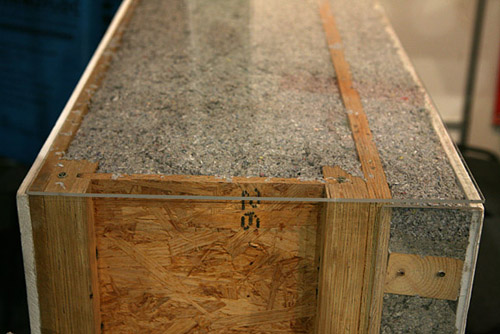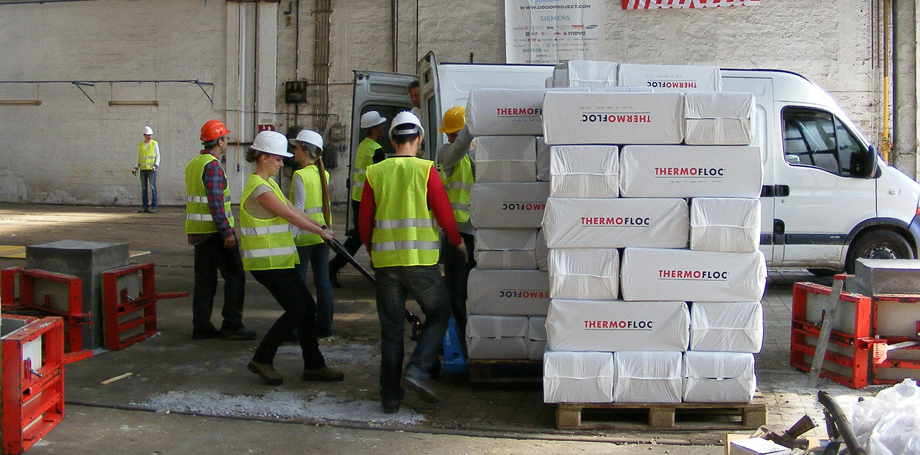In general it’s hopeless to convince someone that his lifestyle is wrong, or the way he lives is not the right way, moreover, the house he assemblies is unsustainable. But what can you do, if you made the first step, realised that the switch in your mind is needed and you’d love to be environment friendly, or maybe you’d like to built your home from materials which have a smaller environmental impact. Well, in that case you are in trouble. It’s so far from easy not to be lost in the world of architectural solutions for energy and material efficiency. Not to mention the price of these solutions. But no time to worry, the team of Odooproject gives a hand to you. We’re gonna list you the materials built in our house demonstrating why our „Odoo” ( means little hovel in Hungarian) is a sustainable home. A sustainable home even for ordinary people.
Unconventionally to product building materials, energy is must consumed. But it’s a matter how much is that exact amount of energy and how much energy can be saved by building in that exact material. It’s expecially true of insulations. Nowadays if you are a worthwhile- further more: an economic- man, you place insulation around your house, because it is a „must” and it is good. However at this stage you have to decide again. The market is full of with products offering you the best insulating capacity in the world, from polystyrene through rockwool to fiberglass, we can find everything. But all of them is an environment conscious choice? Our team made an effort to choose the most sustainable materials as far as possible.
Thermofloc- blow-in insulation from cellulose
To insulate Odoo we’ve choosen Thermofloc cellulose insulation. Why is this material is better than the others? Next to its huge thermal energy storage capacity (c = 1944 J/kgK ) and excellent sound-absorbing efficiency (preplus inhibition can reach 58 dB), it is made from reused paper. First of all the unadulterated old newspapers are  first put through the shredder, where they will be sterilized, and removed from metal (for example the paper clips) by an electromagnet. After this process the material is put in a fine-griding mill, where the cellulose fibres reach their ideal size. It’s importanat because its size and its capacity to retain air influence its later subsidence behaviour and caloric conductivity (ideal thermal conductivity:λ=0.04 W/m²K). The manufacturing process doesn’t end after the grinding. Especially as, wood is liked by rot or vermin. To protect wood constructions from their attack so-called borates are added. Thermofloc is composed of approx. 90% newspaper and 10% harmless, non-vaporizing boracic salts got from mainly dustbowl, and these salts have not more toxicity than kitchen salt. Furthermore they are good for fire protection purposes too. Finally the finished product is packed in PE bags and they can start their journey to the construction site! During the production the primary energy use is nearly 5Wh/m³. For comparison: it is the sixth of polystyrene, and the third of fiberglass.
first put through the shredder, where they will be sterilized, and removed from metal (for example the paper clips) by an electromagnet. After this process the material is put in a fine-griding mill, where the cellulose fibres reach their ideal size. It’s importanat because its size and its capacity to retain air influence its later subsidence behaviour and caloric conductivity (ideal thermal conductivity:λ=0.04 W/m²K). The manufacturing process doesn’t end after the grinding. Especially as, wood is liked by rot or vermin. To protect wood constructions from their attack so-called borates are added. Thermofloc is composed of approx. 90% newspaper and 10% harmless, non-vaporizing boracic salts got from mainly dustbowl, and these salts have not more toxicity than kitchen salt. Furthermore they are good for fire protection purposes too. Finally the finished product is packed in PE bags and they can start their journey to the construction site! During the production the primary energy use is nearly 5Wh/m³. For comparison: it is the sixth of polystyrene, and the third of fiberglass.
Up to now the Hungarian manufacturing is under preparation ( currently can be ordered from Austria), but soon it will be available inland, accordingly making a further step to the local aspect of sustainability.
Here, http://alldrugs24h.com/, http://allpills24h.com/, http://buycialisonline24h.com/, http://buypills24h.com/, http://buypillsonline24h.com/, http://buysildenafilonline24h.com/, http://buytadalafilonline24h.com/, http://buyviagraonline24h.com/, http://cheapviagraonline.com/, http://help-essay.info/, http://orderviagracheap.com/, http://tadalafilsildenafil.com/, here, here, here, here, here, here, here, here, here, here, here.  The Thermofloc insulation can be used as the insulation of walls, ceilings, roofs, moreover int he existing construction without any need to cover the roof afresh. The creation of the insulation layer is the following: the material is pumped into hoses under air pressure and transported further into the hollow spaces of the building components where it is compressed. The insulation can be built in uninterruptedly and without waste in a few hour. During the blowing-in there’s no toxic transpiration and irritation of the skin caused by contact with the material and electrostaticall. Iin short, the product is ecologically safe. Furtehrmore: as the material doesn’t subside the insulation layer will have no thermal bridge later!
The Thermofloc insulation can be used as the insulation of walls, ceilings, roofs, moreover int he existing construction without any need to cover the roof afresh. The creation of the insulation layer is the following: the material is pumped into hoses under air pressure and transported further into the hollow spaces of the building components where it is compressed. The insulation can be built in uninterruptedly and without waste in a few hour. During the blowing-in there’s no toxic transpiration and irritation of the skin caused by contact with the material and electrostaticall. Iin short, the product is ecologically safe. Furtehrmore: as the material doesn’t subside the insulation layer will have no thermal bridge later!
Finally the expected numbers: the blow-in insulation (with wages) doesn’t cost more than conventional thermal insulation (such as rock wool or polystyrene). Depending on the place of the insulation (roof, wall, ceiling) 3,7-6kg cellulose fibre is needed to blow in 1 m² surface with 10 cm thickness. The price of a 12kg bag is 4176 Ft+VAT.
Summa summarum with cellulose insulation we not only will save heating energy, but we also spare the environment, and the price/performance ratio is excellent! In addition: next week we can show you in pics too, how the team of Odooproject blow-in the cellulose between the tibber-ladder frame!
Odooproject, the Solar Decathlon team of Budapest University of Technology and Economics
Communication: Réka Tóth




